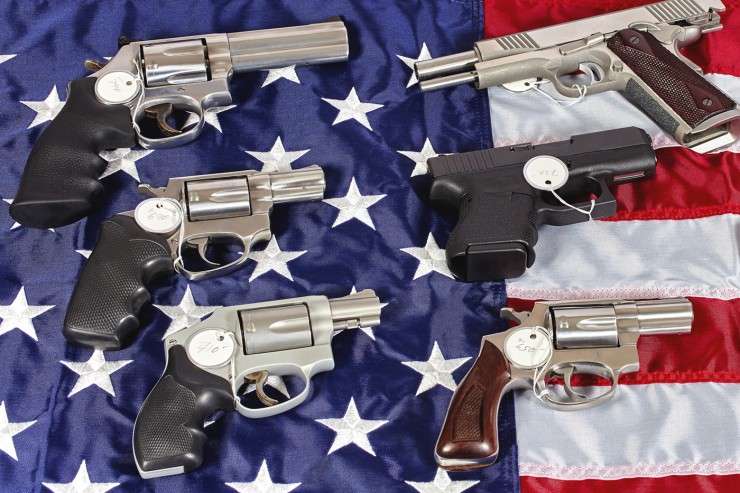Credit: Greg St. Martin
The estimated number of privately-owned guns in America grew by more than 70 million—to approximately 265 million—between 1994 and 2015, and half of that gun stock is owned by only 3 percent of the population, according to a comprehensive national survey co-led by Northeastern University.
The survey, conducted in collaboration with Harvard University, is the first nationally representative survey of firearm ownership and use in more than a decade, according to Matthew Miller, professor of health sciences and epidemiology at Northeastern.
"This is the first survey in over a decade to assess why people own guns, how many guns they own, and what their attitudes about guns are," Miller said.
Long guns, such as rifles and shotguns, make up the majority of the U.S. gun stock. But the study found that handguns represent the majority of new guns acquired over the past 20 years, making up 42 percent of the total civilian-owned gunstock in the U.S., compared to one-third two decades ago. Although the percentage of adult gun owners in America has slightly declined—22 percent in 2015, compared to 25 percent in 1994—because of population growth, in 2015 there were approximately 10 million more U.S. gun owners (55 million) than there were in 1994 (45 million). The researchers report that gun owners each own, on average, more guns today (five) than they did two decades ago (four).
"Gun ownership has become modestly more concentrated," Miller said, noting that while the median gun owner owns two guns, 8 percent of all gun owners own 10 or more guns and these owners account for about 40 percent of the gun stock. Miller stressed that this finding should not distract from the broader observations in the study that approximately one in every three Americans—including one in three children—currently live in homes with firearms, which, he emphasized, we know places all household members at elevated risk of injury and death, especially from suicide.
Miller underscored that the survey shows a dramatic shift in the motivations for gun ownership. Nearly two-thirds (63 percent) of all gun owners surveyed—and 76 percent of handgun owners—reported that protection was one of their primary reasons for ownership. Miller said these findings are in stark contrast to the mid-1990s, when the last comprehensive survey to assess reasons for gun ownership, the 1994 National Firearm Survey, found that 46 percent of gun owners cited protection as the principal reason for gun ownership (the majority cited recreation, such as hunting or target shooting).
"What's seems to have changed over time is the type of guns U.S. civilians own and the reasons they own them," he said.
The researchers also asked owners about how they acquired their guns. Of respondents who said they acquired their most recent gun in the past two years, approximately 80 percent said they purchased them, while the rest said they got them as gifts, through inheritance, or by other non-purchase ways. Of those who purchased their guns, three-quarters said they bought them at a store, while the rest said they acquired them through purchase from a family member, friend, gun show, pawn shop, or online.
The researchers noted that the study can help inform public health, public safety, and public policy discussions around guns and gun transfers.
"It's a building block for any kind of public health assessment to reduce gun-related violence," Miller said. "It's inconceivable to do something about, say lung cancer, without knowing who smokes, how much they smoke, and why they smoke. It's been over a decade since we've had a good survey measure of why [people] own guns in this country, what types of guns they own, and how often they purchase or otherwise transfer guns to one another."
Consistent with past surveys, the researchers' findings indicate that gun owners overall are disproportionately male, white, non-urban, and from the South. Some differences, however, emerged in this new survey when comparing owners of only handguns or long guns to those who own both. For example, the researchers found that respondents who owned only handguns were just as likely to live in urban environments as rural ones, and to be demographically more diverse compared with owners of long guns.
Other findings:
- 5 percent of gun owners reported having disposed of a gun in the past five years, with 35 percent of those owners indicating that was by sale to a family member or friend.
- 2.5 percent of those surveyed reported having had a gun stolen within the past five years, accounting for an estimated 250,000–550,000 guns per year
- 70 million guns changed hands over past five years, the majority of which through purchase
- Female gun owners were more likely than male gun owners to report owning any gun for protection
The findings are based on a survey in November 2015 of 3,949 adult Americans, sampled so as to allow nationally representative estimates. The complete findings will be published next year by the Russell Sage Foundation.
Provided by Northeastern University



















